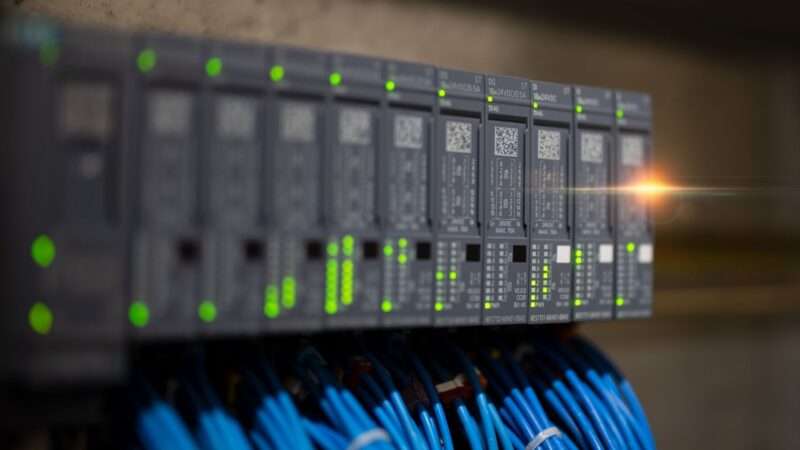How Programmable Logic Controllers Are Replacing Legacy Automation and Driving Pharma-Ready Smart Manufacturing
In the highly regulated and precision-driven world of pharmaceutical manufacturing, automation is no longer a convenience—it is a necessity. With the push toward Pharma 4.0, the need for greater process control, data traceability, and system flexibility has intensified. At the heart of this evolution lies the Programmable Logic Controller (PLC)—a digital workhorse that is steadily displacing traditional automation methods across production, packaging, and utility systems.
Understanding how PLC-based architectures compare with traditional relay-based or hard-wired control systems is critical for modernizing operations, improving compliance, and preparing for a future of intelligent manufacturing.
Traditional Automation: Reliable but Rigid
Before PLCs became mainstream, most industrial control systems relied on hard-wired relays, timers, and analog devices to manage electromechanical processes. These systems, while dependable, presented several limitations:
- Lack of flexibility: Any logic change required physical rewiring and panel modifications.
- Troubleshooting complexity: Fault diagnosis in relay logic was manual, time-consuming, and prone to error.
- Limited scalability: Expanding or reconfiguring control systems involved substantial hardware redesign.
- Minimal data availability: There was no inherent capacity for historical logging, event tracking, or integration with higher-level systems.
In an era that demands rapid product changeovers, real-time traceability, and digital connectivity, these limitations create operational and regulatory bottlenecks.
Enter PLC Systems: Digital, Flexible, and GMP-Ready
Programmable Logic Controllers offer a software-based approach to logic control. Designed to withstand harsh industrial environments, PLCs are now standard across pharmaceutical automation—from granulation lines and vial filling systems to HVAC and water treatment skids.
Key advantages of PLCs over traditional systems include:
- Software-driven control logic: Logic changes can be implemented via programming software without hardware rewiring.
- Advanced diagnostics: PLCs provide real-time status, alarm history, and process trends for faster troubleshooting.
- Modular scalability: I/O modules and communication ports can be added or modified as process requirements evolve.
- Data integration: PLCs can seamlessly interface with SCADA, MES, and cloud-based systems for centralized monitoring and control.
- 21 CFR Part 11 readiness: With appropriate software layers, PLCs support electronic records, audit trails, and validated data capture—critical for regulatory compliance.
These capabilities make PLCs an ideal choice for pharmaceutical plants transitioning toward digitally validated, flexible, and data-rich environments.
Use Case Comparisons in Pharma Environments
The practical benefits of PLC integration are particularly evident in regulated settings:
- Granulation and Blending Equipment: PLCs can control motor speeds, monitor torque, and adjust parameters in real time based on load or batch profile, enabling consistent batch quality.
- Sterile Fill-Finish Lines: PLCs manage synchronization across servo drives, sensors, and isolation barriers, with high-speed response times and minimal latency.
- Utility Management: For HVAC, WFI, and clean steam systems, PLCs enable PID control, interlocks, and alarm systems with integrated data logging for validation purposes.
These systems also enable remote diagnostics, predictive maintenance, and event-based triggers, which are not feasible with traditional control panels.
Integration Considerations: Planning for Lifecycle Performance
While PLC systems offer significant advantages, successful integration requires careful planning and engineering discipline:
- Vendor selection and platform standardization: Choose PLC platforms with long-term vendor support, GAMP documentation, and compatibility with your site architecture.
- GMP documentation: Ensure all software development, hardware qualification, and functional testing align with GxP standards.
- Cybersecurity: Modern PLCs are network-enabled—protection against unauthorized access, firmware tampering, and data breaches is essential.
- Operator training: Shifting from hardwired logic to programmable systems requires upskilling plant operators and maintenance staff.
When implemented correctly, PLC systems can evolve with the process, support new product introductions, and become a foundational layer in your digital manufacturing strategy.
Looking Ahead: PLCs in the Pharma 4.0 Ecosystem
As pharmaceutical plants adopt digital twins, closed-loop control, and AI-driven analytics, PLCs are expected to integrate even more deeply into the automation stack. Emerging trends include:
- PLC-HMI integration with cloud analytics
- Standardized PLC templates for rapid equipment commissioning
- Interoperability with robotics and automated guided vehicles (AGVs)
- Edge computing-enabled PLCs with onboard data preprocessing
The shift from legacy automation to PLC-based architectures is no longer optional—it is a strategic imperative for pharmaceutical companies aiming to remain agile, compliant, and future-ready. Understanding the trade-offs and advantages is essential to unlocking smarter, faster, and more reliable pharmaceutical manufacturing.






